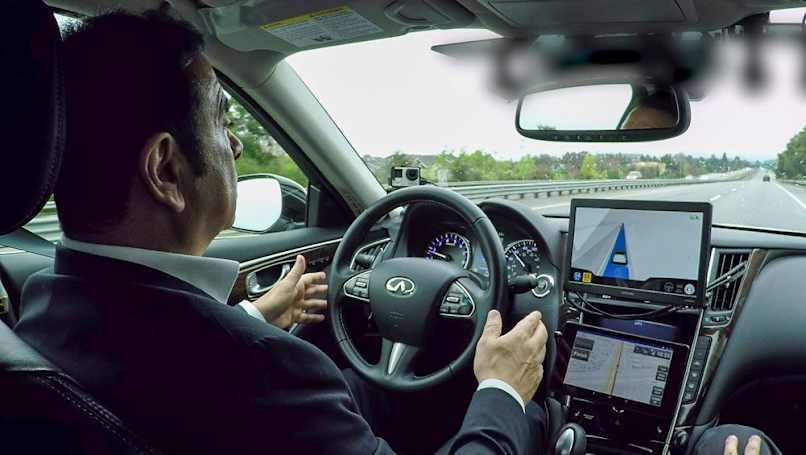
The new car sales winners of 2024: Toyota, Mitsubishi, Ford, BYD, Suzuki, GWM and more!
The Australian new car market is more competitive than ever before and the 2024...
Browse over 9,000 car reviews

Do you think you’re a good driver?
The chances are you do, everyone tends to have a higher opinion of themselves than reality dictates.
I’m not suggesting you’re a bad driver, and I’m certainly not saying I’m perfect. But as we enter this new age of active safety and autonomous vehicles, I find myself questioning not only the value of driver assistance technologies but also our role (the human driver) in the process of driving a car.
Make no mistake, I don’t want unsafe cars. I think we should always be trying to make cars safer and reduce the risk of accidents on the road.
My concern is that as more active safety features become mandated to ensure the best possible safety score such systems are being rushed and do not serve their intended purpose.
Case in point, last week I drove the new model car (I won't name it to avoid singling out the car company) and after just a few kilometres behind the wheel I found myself looking for the button to turn off the lane keeping assist.
Why? Because the system is simply not calibrated properly and therefore was repeatedly asking me to keep my hands on the steering wheel even when I had both my hands firmly planted on the rim. It happened on a straight piece of motorway and I didn’t need to add any steering input.
Even the usual gentle tug on the wheel to apply some torque to let the system know I was in control didn't work and I found myself having to more aggressively pull on the steering wheel. I don't know about you, but noticeably swerving in your lane every kilometre or so doesn't feel particularly safe to me.
To be clear, this is not a problem limited to one car company. In fact there are several brands that struggle with this technology these days. I’d even go so far as to say it's a fairly widespread problem – albeit to varying degrees across brands.
The same is true of speed limit warnings, distracted driver sensors, collision warnings… the list goes on. I drove a car earlier this year that wanted to warn me not to be distracted from the road. The problem was, it did so even when I was looking ahead and beeped so much it became a distraction. It was warning me to pay attention to the road almost as soon as I was out of my driveway. Helpful in theory, terrible in practice.
So often these days I find myself searching for the button to turn these systems off as soon as I get in the car. And what is the point of a safety system that you turn off?
ANCAP says it tests these systems and their functionality as part of its scoring process. If that’s the case, it needs to find a different way of measuring efficacy because what I have experienced in the real world just doesn’t make sense.
The important thing to remember here is this isn’t all being done for free – we’re paying for these systems. New car buyers are being asked to pay more money for newer vehicles fitted with increasing levels of safety that add questionable value to actually avoiding an accident.
AEB - Junction, autonomous emergency braking designed to stop you from driving directly into incoming traffic is perhaps the best example of this current trend to try and make us safer but has the potential to make us dumb, lazy drivers.

I think standard forward collision warning and AEB is a great addition to modern cars (even if it occasionally blurs the line between avoiding an accident and causing it, as I discovered earlier this year), but why do we need it for intersections? Shouldn’t we be looking out the windscreen and scanning our periphery when we’re driving?
To be clear, AEB - Junction is critical to achieving a five-star ANCAP rating but to my mind it feels like a luxury item, an extra that you add, not a necessity. It would make more sense if a four-star rated car wasn’t rounded and publically slammed by ANCAP and carmakers could introduce cars without these more costly, borderline-useful systems and offer more affordable new cars that were still very safe.
Australia's lives lost statistics show that, despite new cars being safer than ever before in crash testing, deaths on our roads are up 6.2 per cent and serious injuries up 8.7 per cent over this time last year.
Technology can and typically does improve. The early blind-spot monitoring systems were tantamount to useless, providing so many false positives you simply couldn’t trust them. These days they are much better. The same is true of early AEB systems and I’m sure manufacturers will improve their lane keeping assistance settings.
The problem is, we’re stuck with these developing systems now and carmakers are forced to release them for fear of scoring anything less than five stars from ANCAP. And these active safety features are lulling many of us into a false sense of security, reducing our focus on the road and leading us down a dangerous path, in my opinion.
Taking more and more responsibility from the driver and putting it onto the car is simply wrong in my book. Driving is a privilege, not a right. Everyone who gets behind the wheel should be singularly focused on getting safely to their destination and respectful of everyone around them.
Shifting that responsibility to the car feels premature at best and potentially deadly at worst. At the end of the day making cars safer is great but as good as technology has the potential to be, it can’t beat a focused and attentive human being behind the wheel.
Comments